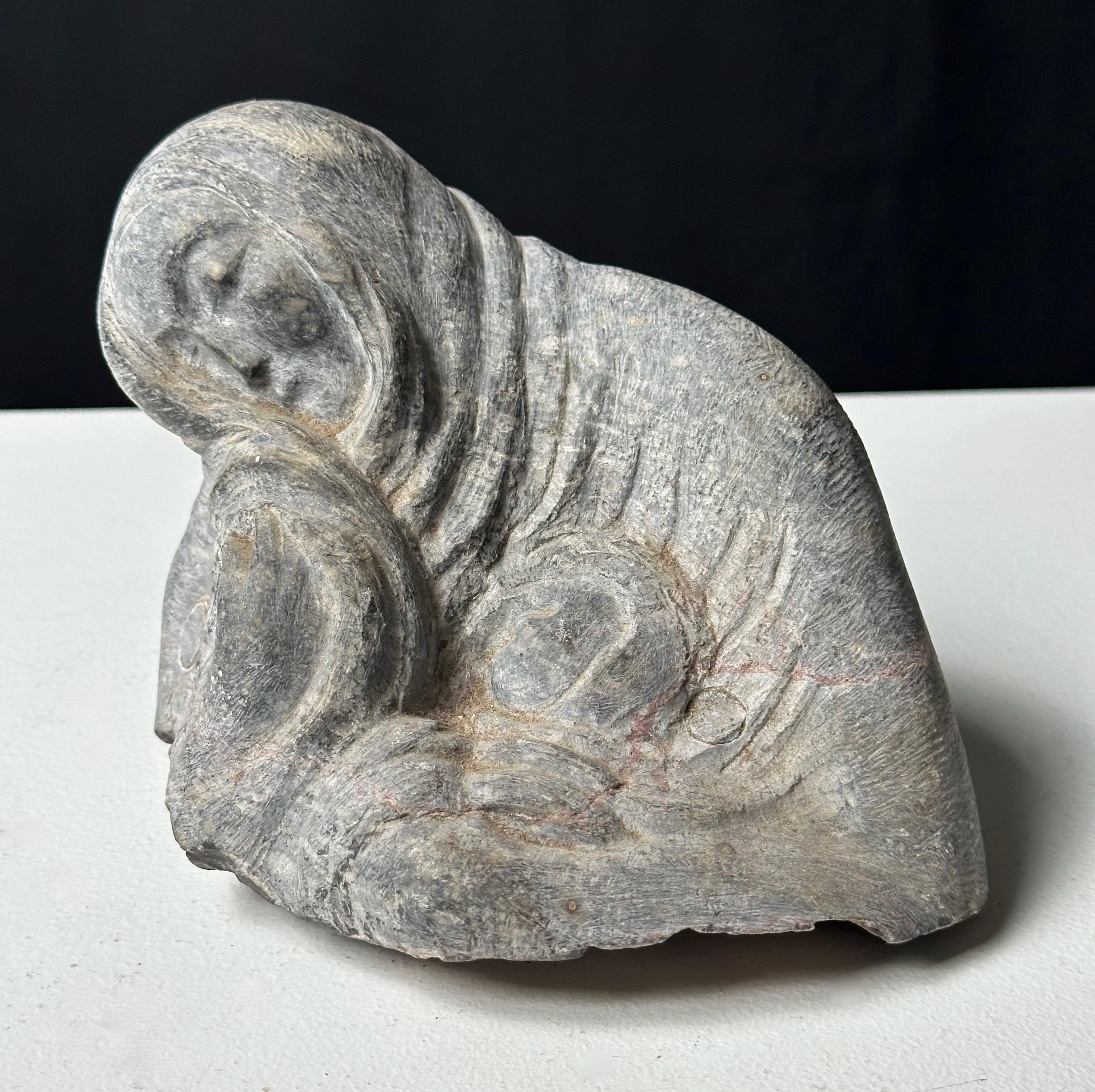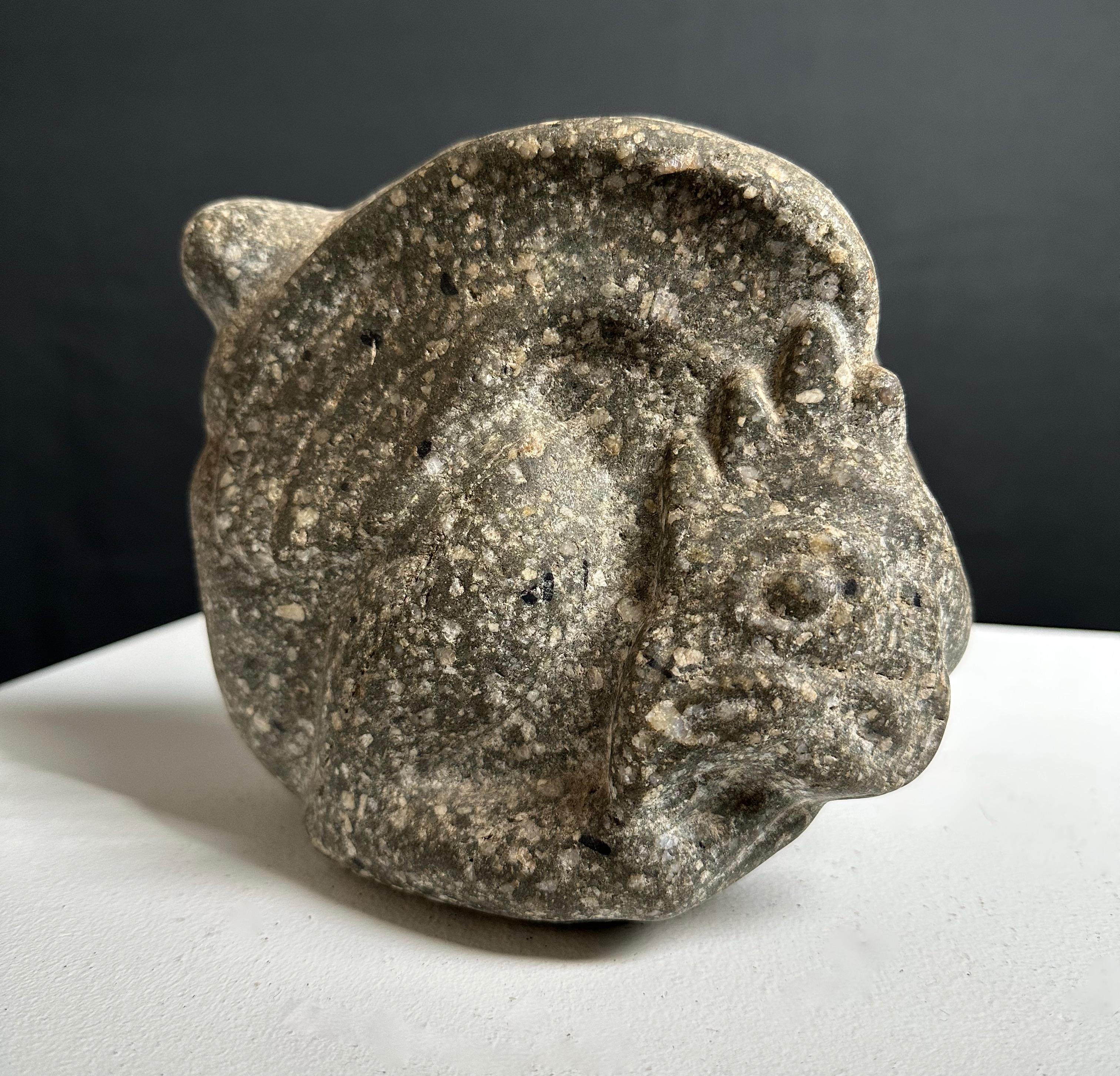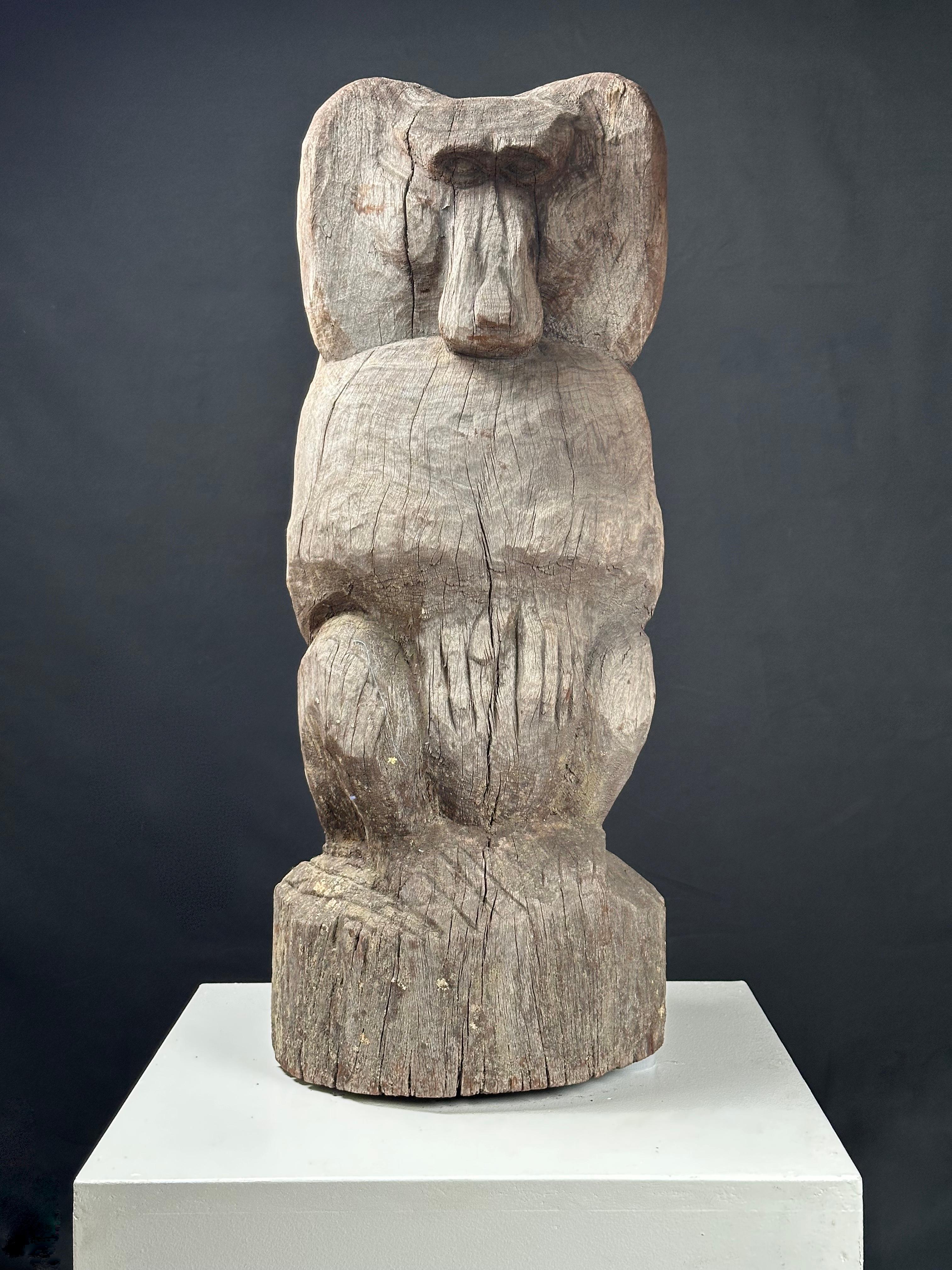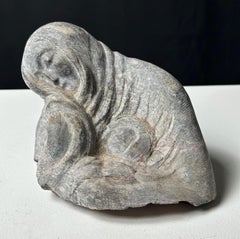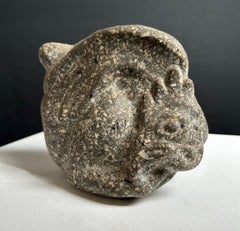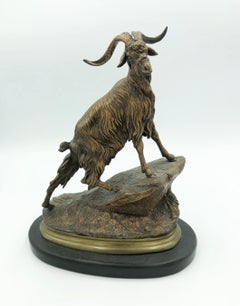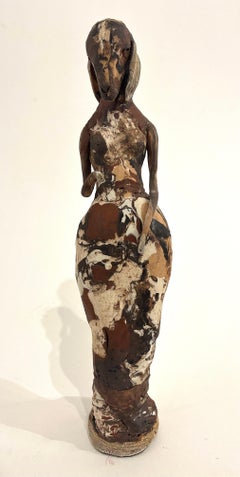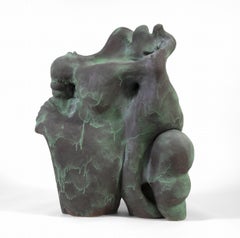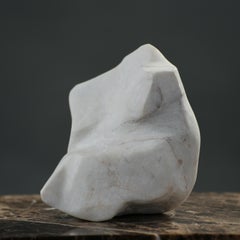Want more images or videos?
Request additional images or videos from the seller
1 of 7
Mark MorrisonMountain Goatca. 1940
ca. 1940
$1,000
$2,00050% Off
£752.43
£1,504.8750% Off
€869.29
€1,738.5850% Off
CA$1,403.98
CA$2,807.9650% Off
A$1,516.76
A$3,033.5150% Off
CHF 806.93
CHF 1,613.8650% Off
MX$18,250.71
MX$36,501.4150% Off
NOK 10,217.43
NOK 20,434.8650% Off
SEK 9,344.12
SEK 18,688.2350% Off
DKK 6,494.04
DKK 12,988.0950% Off
About the Item
Mark Morrison (1895-1964)
Mountain Goat, ca. 1940
Carved diorite
3 7/8" wide, 2.5" deep, height is 3"
Provenance: Estate of Mrs. Mark Morrison.
Born:
Kingfisher, OK
Education:
University of Missouri
John Flannagan, mentoring and private instruction ca. 1940
Art Students League with William Zorach and Jose de Creeft
Exhibited:
Sculpture Guild Annuals
Audubon Artists Annuals
National Academy of Design Annuals
Pennsylvania Academy Annuals
Metropolitan Museum Artists for Victory, 1942.
Newark Fine Arts Museum
Whitney Annuals
International Exhibition, Fairmount Park, Phila. 1950
Nebraska Fine Arts
Metropolitan Museum Exhibition, 1951
Boston Arts Festival
National Sculpture Society Annuals
Memberships:
Sculpture Guild, Inc.
Audubon Artists
Awards:
Ellen Prince Speyer Award, N.A. 1950
Architeects Leauge of New York, Avery Award, 1958, 1959.
Museum Collections:
Metropolitan Museum of Art
National Academy of Design
Pennsylvania Academy of Fine Arts
Whitney Museum of American Art.
Museum of Fine Arts, University of Arizona
Mark Morrison began his life as a sculptor while nearing his professional retirement. In the late 1930s and into the 1940s, he like many of the younger artists in New York City availed himself to the great many academies, museums, teachers and mentors it offered. He studied with John Flannagan before his death, and then Jose de Creeft and Williams Zorach at the Art Students League. Having an attraction and aptitude for the ideas of the direct carving movement and good thorough craft, he took advantage of the growing public interest in a new American sculpture, and worked quickly to become a contemporary of his teachers. Through the 1950s, he exhibited with them, sold, entered competitions, and won awards. He was a sculptor with a sure hand, a head for academy, patience, and promise. Morrison died suddenly in October 1964 having had just married his second wife earlier the same year. Mrs. Mark Morrison would offer a small piece for one more exhibition with a Sculptors Guild in 1965. The work was never seen again until 2025.
Morrison was born on New Year’s Day in 1895 in Kingfisher, Oklahoma, a small rural city not yet a part of the Union. The only child of a Protestant minister, and one of only 16 that in 1913 would graduate from his high school in Higginsville, Missouri. He studied agriculture at the University of Missouri, at some point leaving to enlist in the army. He would reach the rank of Major. After the war, he married his first wife, moved to New York and began work for Tidewater Oil. He worked with them until 1954, retiring as a vice president. At the time he was living at 8 W. 13th St., his studio already set up in a corner of the basement in his apartment building.
The earliest exhibition on record for a work by Morrison was the Artists for Victory show at the Metropolitan Museum, 1942. Earlier the same year, John Flanagan committed suicide. The death was a terrible blow. Flannagan had been a profound influence, sharing both technical instruction and philosophical guidance. The importance of their friendship during the 1930's cannot be overemphasized. Morrison is part of Flannagan's artistic legacy, his only known pupil during the mythical sculptor's short life. Born in the same year of 1895, both artists came to NYC from rural regions of the US: Oklahoma and North Dakota respectively. In contrast to Morrison's stable life, Flannagan was a deeply troubled, difficult, impatient and unpredictable man. To have considered mentoring Morrison, his teacher must have seen a kindred spirit and artist of extraordinary potential. In turn, Morrison must have been a sympathetic and patient pupil who recognized the importance of overlooking personal shortcomings for the invaluable instruction of an artistic genius.
Morrison did not show regularly for almost 10 years spending this time educating himself, exhibiting here and there. He continued his sculpture studies at the Art Student League with Zorach and de Creeft, spending most nights working stones in his studio. His mature style would become clearly realized by 1950, a synthesis of the naïve and the sophisticated, what Flanagan called "the image in the rock", and the polished fluid marbles of Zorach.
Black Swan was featured in the Sculptors Guild exhibition "In Time and Place" at the Museum of Natural History in March 1952. And exhibit pushing those points in their mission to assist the public to fuller appreciation of sculpture, and that the sculpture and the architecture of buildings may again be planned simultaneous and homogeneously. Morrison's swan was the centerpiece of the modern living room designed by Earnshaw, Inc. In the same hall of the museum one year earlier Morrison and other members of the group demonstrated process at work in seven makeshift studios. He would continue to exhibit in Guild annuals and Audubon Artist annuals. His sculpture "Gosling" was given a special honorable mention from the Architects League in the Avery Competition of 1958, runner up to Zorach. In 1959, when he showed "Grasshopper" he won outright.
He had moved his studio to a larger more private space a few blocks away in Greenwich Village. By 1964 his work had become larger in scale, his groupings more challenging and lively, more considerate of light and the nature of the stone itself. He had lost weight and for a man of nearly 70 years old was in very good health. His death was unexpected and unfortunate, probably of a stroke . His legacy has survived, largely unknown until now in a small ranch in upstate New York.
- Creator:Mark Morrison (1895 - 1964, American)
- Creation Year:ca. 1940
- Dimensions:Height: 3 in (7.62 cm)Width: 2.5 in (6.35 cm)Depth: 3.88 in (9.86 cm)
- Medium:
- Movement & Style:
- Period:
- Condition:
- Gallery Location:Wilton Manors, FL
- Reference Number:1stDibs: LU245216297902
About the Seller
4.9
Platinum Seller
Premium sellers with a 4.7+ rating and 24-hour response times
Established in 2007
1stDibs seller since 2015
446 sales on 1stDibs
Typical response time: 3 hours
- ShippingRetrieving quote...Shipping from: Wilton Manors, FL
- Return Policy
More From This Seller
View AllMountain Goat
Located in Wilton Manors, FL
Mark Morrison (1895-1964)
Mountain Goat, ca. 1950.
Carved granite.
6.25" long, 3.25" wide, height is 6.25"
Born:
Kingfisher, OK
Education:
University of Missouri
John Flannag...
Category
Mid-20th Century Realist Sculptures
Materials
Granite
$1,950 Sale Price
35% Off
Ram
Located in Wilton Manors, FL
Mark Morrison (1895-1964)
Ram, ca. 1940
Carved diorite
9" long, 6" wide, height is 7.5"
Rusty band on hind quarter is a naturally occurring iron ore occlusion in stone, which bot...
Category
Mid-20th Century Realist Sculptures
Materials
Granite
$2,000 Sale Price
60% Off
Madonna
Located in Wilton Manors, FL
Mark Morrison (1895-1964)
Madonna, ca. 1940
Carved stone
7" wide, 5" deep, height is 4.5"
Provenance: Estate of Mrs. Mark Morrison.
Born:
Kingfisher, OK
Education:
Univers...
Category
Mid-20th Century Realist Sculptures
Materials
Stone
$1,600 Sale Price
60% Off
Small Rooster
Located in Wilton Manors, FL
Mark Morrison (1895-1964)
Small Rooster, ca. 1940
Carved grey Vermont granite.
6.5" by 3.5", height is 6 1/8"
Provenance: Estate of Mrs. Mark Morrison.
Born:
Kingfisher, OK
E...
Category
Mid-20th Century Other Art Style Sculptures
Materials
Granite
$1,000 Sale Price
60% Off
Monkey
Located in Wilton Manors, FL
Mark Morrison (1895-1964)
Monkey, ca. 1940
Carved New Hampshire granite
8.5" by 5", height is 16.5"
Provenance: Estate of Mrs. Mark Morrison.
Born:
Kingfisher, OK
Education:
...
Category
Mid-20th Century Realist Sculptures
Materials
Granite
$4,000 Sale Price
50% Off
Baboon
Located in Wilton Manors, FL
Mark Morrison (1895-1964)
Baboon, ca. 1940
Carved and weathered Walnut
12" wide, 12" deep, height is 26.5"
Please note the bottom surface is not perfectly flat and the piece lean...
Category
Mid-20th Century Realist Sculptures
Materials
Walnut
$2,500 Sale Price
50% Off
You May Also Like
Mountain Goat
By Jules Moigniez
Located in Missouri, MO
Jules Moigniez
"Mountain Goat"
Bronze
approx 11 x 9 x 4 inches
Signed
Jules Moigniez (1835-1894)
Jules Moigniez was born in Senlis sur L'Oise, France ...
Category
1870s Realist Figurative Sculptures
Materials
Bronze
Goat II
By Robin Whiteman
Located in Bozeman, MT
Robin has worked with clay since the age of eleven. Her sculptures have ranged in size from life sized sculptures to the diminutive porcelain pieces. She has been a resident artist a...
Category
2010s Contemporary Sculptures
Materials
Clay, Glaze
The Pupator
Located in Kansas City, MO
Coleton Lunt
The Pupator
Stoneware, paint, reduce cooled, cone 6
Year: 2020
Size: 39.5 x 33 x 16 in.
Signed
COA provided
Artist Statement:
I experiment with the two opposing approa...
Category
2010s Contemporary Sculptures
Materials
Stoneware, Paint
Price Upon Request
Abstract Form
Located in New York, NY
Abstract Form is a mid-century modern sculpture by Dutch artist Leo De Beer, exemplifying his commitment to uncovering form from within. Rendered in a styl...
Category
1970s Abstract Abstract Sculptures
Materials
Marble
Hippopotamus
Located in Milwaukee, WI
Shona sculpture from Zimbabwe
Category
1980s Figurative Sculptures
Materials
Stone
$2,320
Family
Located in Los Angeles, CA
Family, 1976
Martha Tickiq (1939 - 2015)
Baker Lake
Basalt
A wonderful example of this artist's work renown for her figure groups.
Appearing in excellent original condition.
Category
Late 20th Century Sculptures
Materials
Stone
More Ways To Browse
Stone Head Sculpture Hand Carved
Mountain Sculpture
Goat Sculpture
Mountain Goat
Bronze After Botero
Cocoon Sculpture
Gustavo Torres
International Klein Blue
Joel Green
Katherine Jackson
Kaws Bff Black
Kaws Mountain
Kennedy Musekiwa
Leo E Osborne
Metal Sculpture I Beam
Murakami Vinyl
Norma Minkowitz
Outdoor Glass Sculpture
